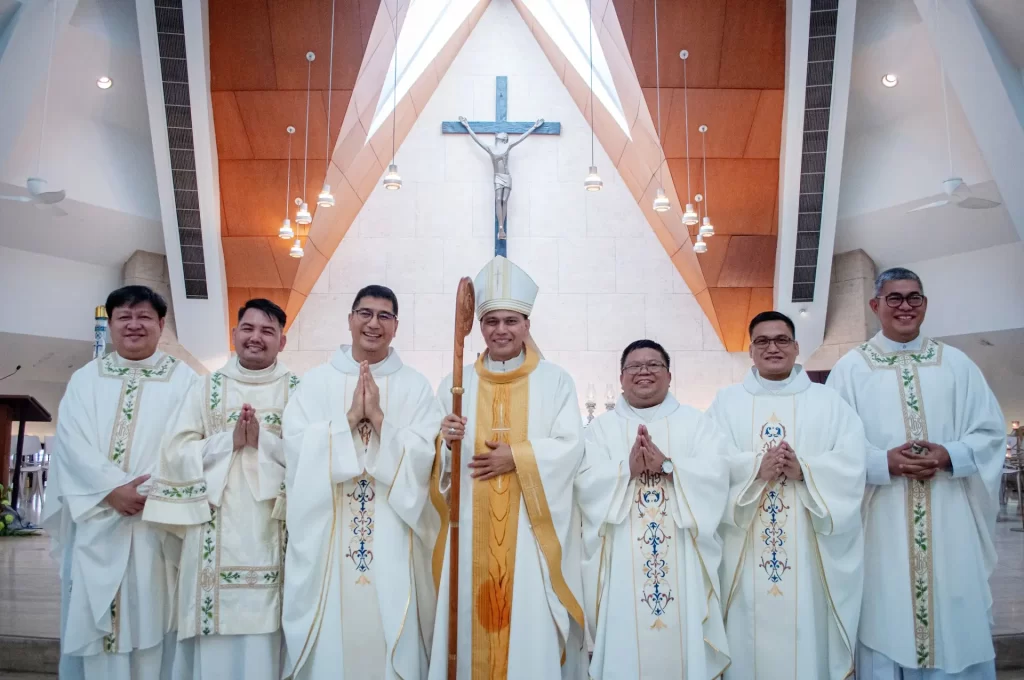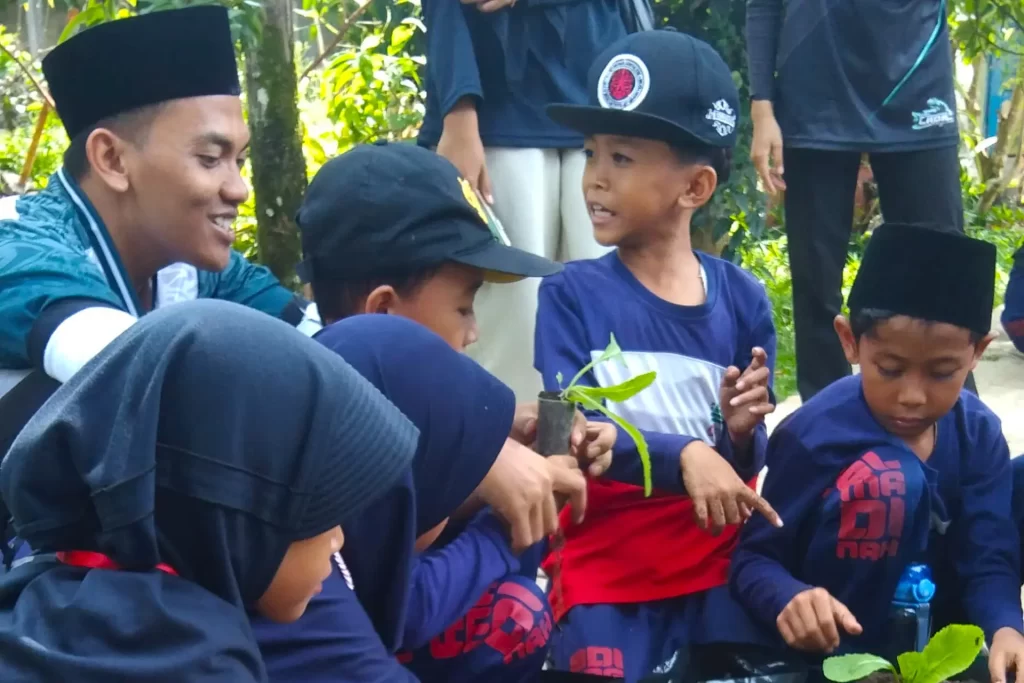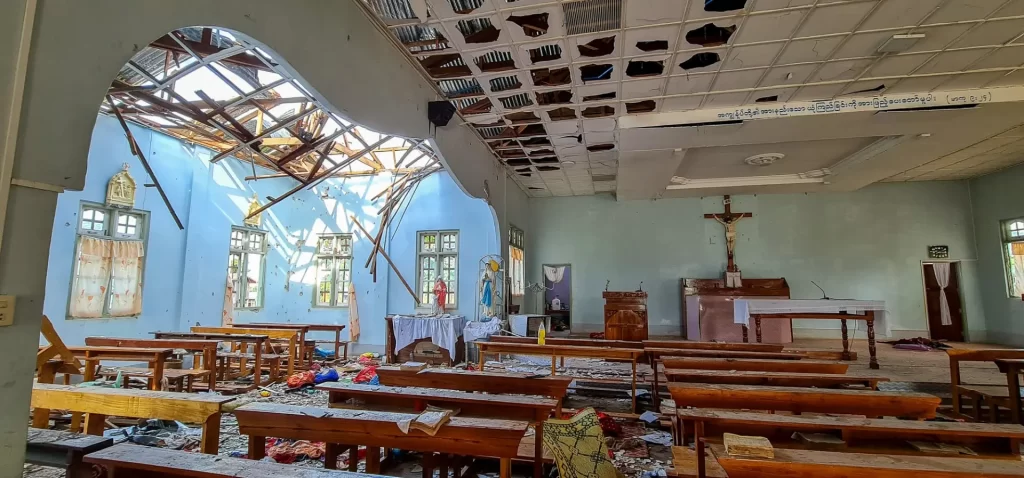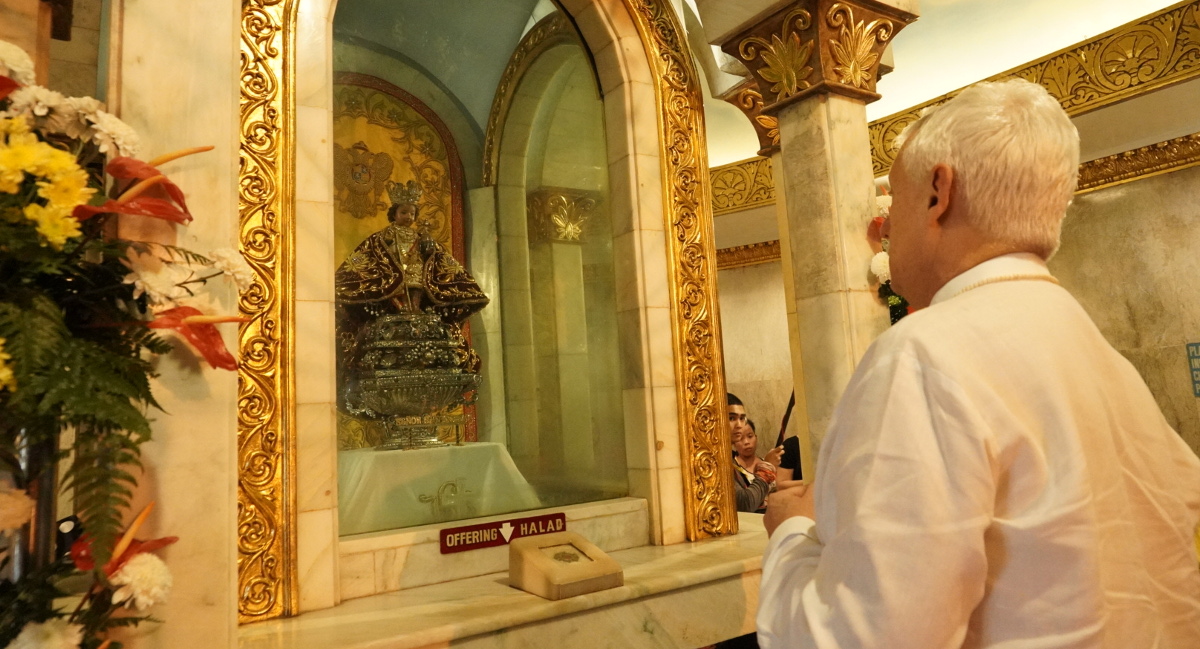
Fr General Arturo Sosa SJ landed in Cebu on December 11 for the second leg of his eight-day trip to the Philippines. He was met by Jesuits and representatives of Sacred Heart School-Ateneo de Cebu (SHS-AdC).
He first visited the Basilica Minore del Santo Niño de Cebu run by the Augustinians. In 1565, the congregation constructed a church made of bamboo, wood and thatch to house the iconic statuette of Christ as Child-King, holding an orb and a sceptre in his hands. The statuette was discovered by the occupying troops of Miguel Lopez de Legazpi and is believed to be the same image that Ferdinand Magellan gave to the wife of a local chieftain, Rajah Humabon, in March 1521.
Over time the Augustinians replaced the thatched church with one of stone. The present church is traced to the year 1711 and is the work of Fray Juan de Albarran OSA. The church suffered damage over the years but has undergone several restorations.
This short visit is especially significant because the Church in the Philippines is preparing for the 500th anniversary of the arrival of Magellan and the first celebrations of the Eucharist and Baptism in the Philippines in 2021.
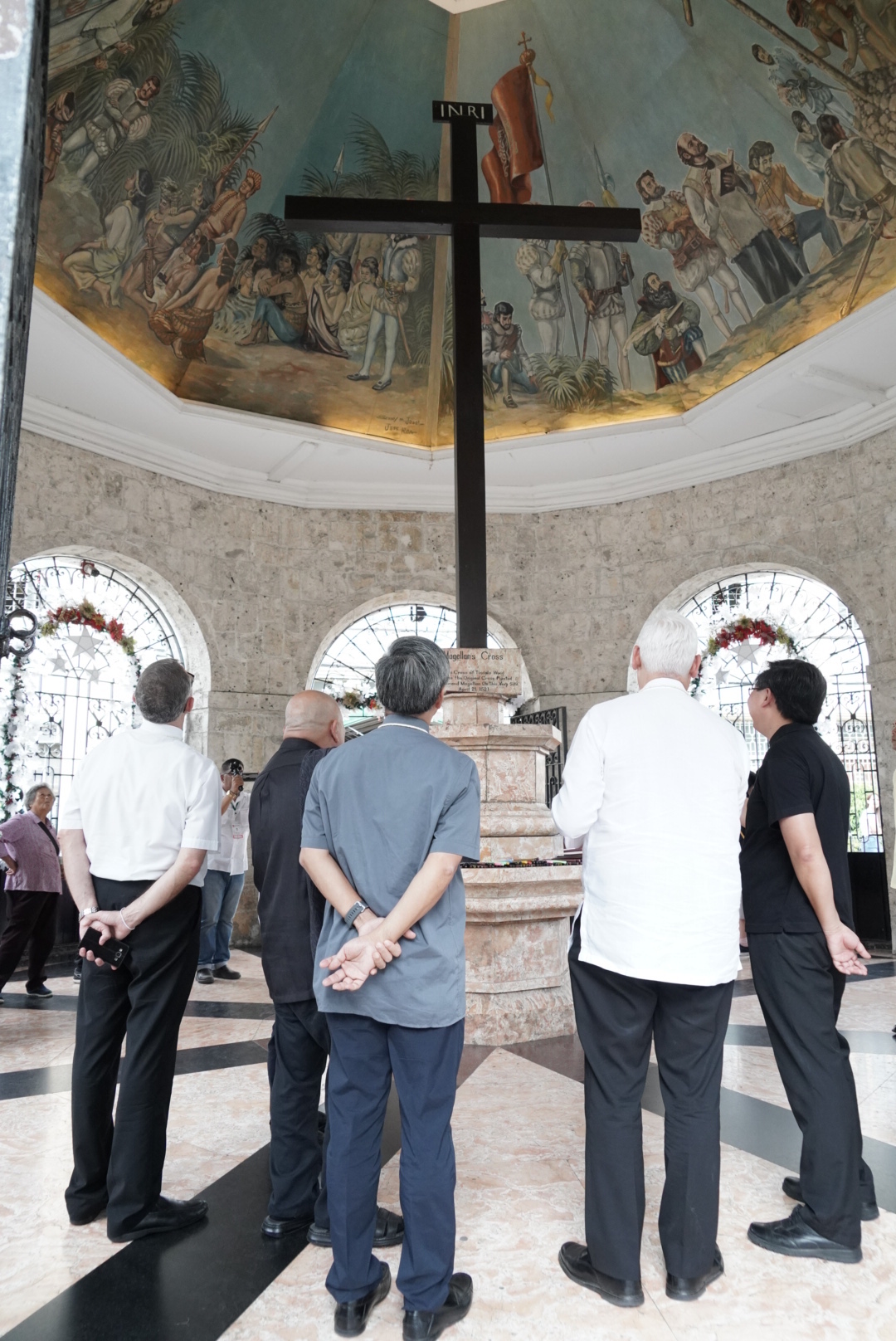
Fr Pacifico C Nohara Jr, Prior and Rector of the basilica, welcomed Fr General Sosa and his party and brought them to the chapel of the Santo Niño for a moment of prayer. They then headed to the upper floor to see the grand hall and the library. Fr Nohara showed the paintings of Augustinian saints and Pedro Agurto, the first bishop of Cebu, who was instrumental in bringing the Jesuits to the city in 1595, the same year the diocese of Cebu was established.
After a brief visit to Magellan’s Cross and prayer at the basilica, Fr General Sosa proceeded to the Archdiocesan Shrine of the Sacred Heart to meet with the Chinese-Filipino Catholics and parishioners. The Sacred Heart parish was established in 1952 by Jesuits who had left China during the Communist takeover. They sought refuge in the Philippines, where they were welcomed in Manila, Baguio, Cebu and Iloilo.
In a two-part liturgical ceremony, Fr Vidal Gornez, Rector and Parish Priest, gave a brief history of the parish and introduced the groups present, which included members of the pastoral council, the Apostleship of Prayer and other mandated organisations of the parish, as well as members of religious congregations, especially the Religious of the Virgin Mary, who practice Ignatian spirituality and run retreat houses in the Philippines.
In his response, Fr General Sosa spoke of the centrality of Jesus in Christian life and the potent symbol of the Sacred Heart. Then,kneeling in front of the altar with Fr Gornez and Fr Manny Uy SJ, Director of SHS-AdC, Fr Sosa led the community in the consecration prayer to the Sacred Heart of Jesus.
The second part commenced with the blessing of the time capsule for the construction of the Jesuit Retreat House to be christened as the House of Retreats of St Peter Faber. Father General blessed the time capsule and its contents symbolising the aspirations to renovate, upgrade and expand the retreat house, which was established in 1963.
Inside the capsule were the architectural plans prepared by Espina and Associates, an architectural firm in Cebu whose architects, the Espina brothers, are alumni of SHS-AdC; symbolic tokens of Christian and Jesuit heritage, such as water, soil, frankincense and oil from the Holy Land; medals of Saints Ignatius, Francis Xavier and the Madonna of della Strada; a book on the history of the Jesuits in Cebu and the Banawa Retreat House; and the national and local newspaper of the day. The items were brought by representatives of the parish community as well as the network of friends,associates and benefactors that the Jesuits have built in the course of more than six decades.
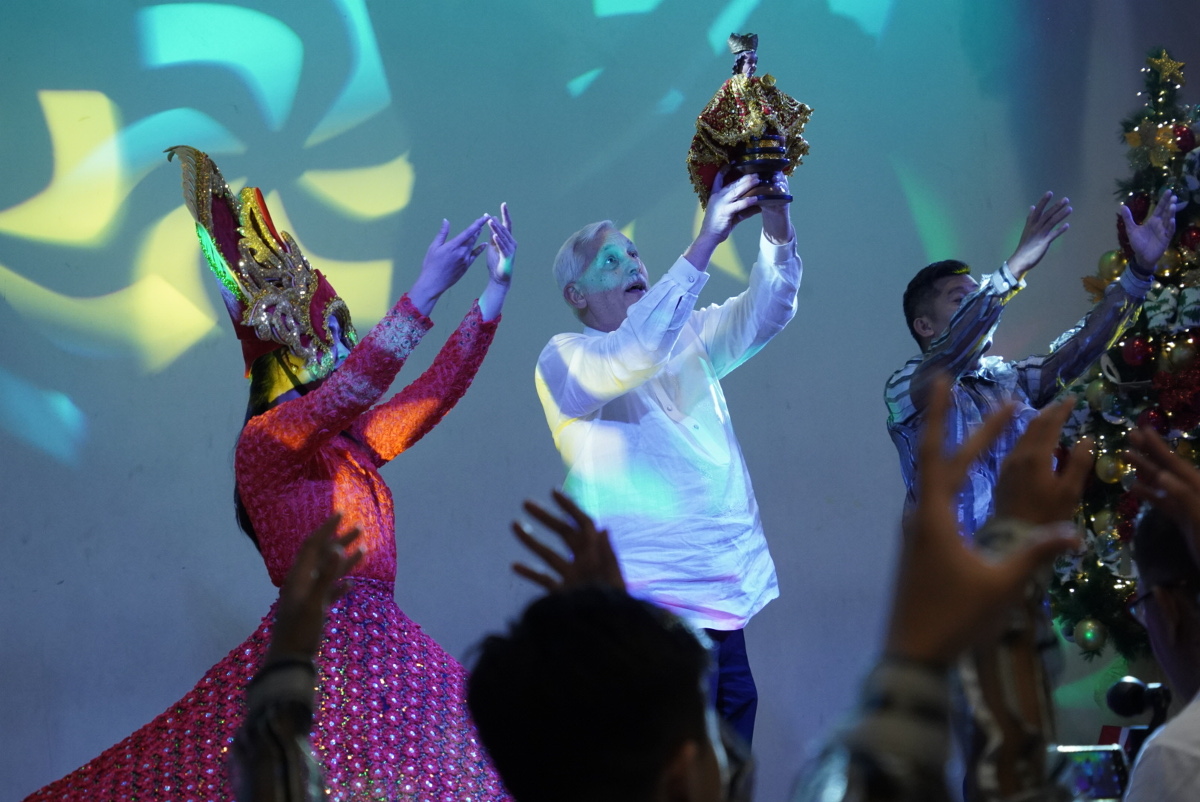
From the shrine, Fr General Sosa travelled to the SHS-AdC campus in Canduman, Mandaue where he spent the evening with the Jesuits and school administrators and representatives. He joined the Mass at the Madonna della Strada chapel presided by Fr Ernesto Javier SJ, the most senior Jesuit of the SHS-AdC community. Fr Javier stressed the appropriateness of the chapel for the event because it brought to mind St Ignatius who was always on the move, going to wherever God willed him to go.
After the Mass, the congregation processed to the Pope Francis Hall for dinner. A group of students and teachers led the singing of the grace before meals. This was followed by a ritual dance to honour the Santo Niño. The dance involves moving two steps forward and one step backward, as if going against a strong current referred to as sulug in Cebuano, while carrying a statue of the Santo Niño. Hence the dance’s name, sinulog. All were called to participate in the dance including Fr Sosa who danced while holding high the Santo Niño. The school presented him with an image of the Santo Niño as a symbol of the community’s continued prayer for him and his intentions, and as a reminder of his visit to Cebu.
In his short address during dinner, Fr General Sosa built on the earlier homily of Fr Javier, reminding all that St Ignatius was a pilgrim and that he envisioned a new form of religious life, active rather than cloistered. Dinner ended shortly after eight, with the singing of the hymn,“Amare et Servire”.

The next day, December 12, on the Feast of Our Lady of Guadalupe, Fr General Sosa blessed the Cor Iesu chapel of SHS-AdC. Incense, candles, flowers, orchestral and choral music filled the joyful celebration. But the final grace note of the blessing were four brief messages and prayers addressed to Fr General Sosa by grade school boys, one dressed as Iñigo the soldier, Ignatius the founder, Pope Francis and Fr Sosa’s alter ego.
Iñigo prayed that the Jesuits would not give him headaches but be obedient like true soldiers. Ignatius stressed the importance of prayer.Pope Francis reminded Fr General to send Jesuits to the peripheries without counting the cost. Fr Sosa’s alter ego, who had streaked his hair white, said to Fr Arturo that he was not getting any younger, so he had to eat well, to take care of his health, to not forget his siesta and to exercise. Fr General Sosa was delighted with these words and prayers. He then gave the final blessing that brought a joyful morning to its conclusion. [Jesuit Communications Philippines]

